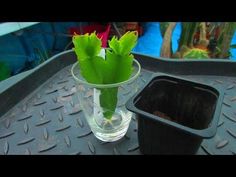How to Water a Cactus: 12 Steps

Cacti are fascinating plants that have adapted perfectly to survive in harsh desert environments. They store water in their thick stems, allowing them to live without frequent watering. However, if you’re growing a cactus at home or in your garden, it’s essential to know how to properly water it. Here we’ve outlined 12 steps to help you give your cactus the care it needs.
1. Know your cactus: Before you begin, identify what type of cactus you have, as different species have slightly varied requirements for water and care.
2. Choose the right soil: For most cacti, use a well-draining soil mix specifically designed for cacti and succulents.
3. Select an appropriate container: Choose a pot with good drainage that allows excess water to escape easily.
4. Examine the weather and season: Cacti require less water during cold or cloudy seasons when they enter a dormant stage.
5. Determine the age of your cactus: Baby cacti generally need more frequent watering than mature ones.
6. Check the soil moisture level: Make sure the first few inches of soil are dry before watering your cactus; overwatering can lead to root rot and other issues.
7. Water deeply: Provide enough water so that it runs out the bottom of the pot, ensuring that the root system is thoroughly wetted.
8. Use room-temperature distilled or rainwater: Cacti prefer pure water without added minerals or chemicals commonly found in tap water.
9. Allow excess water to drain out completely: Place your potted cactus on a saucer or tray and discard any standing water to avoid damage to roots.
10. Wait and observe: Look for signs that your cactus has had enough water after each watering session – its appearance should be brighter and more vibrant.
11. Tailor the watering schedule to your cactus’s needs: Depending on the species, most cacti need to be watered roughly every two weeks in warmer weather, and once a month in cooler seasons.
12. Keep an eye out for signs of over- or under-watering: If your cactus appears to be shriveled, it may need more water; if its stem is soft, brown, or rotting, this might indicate overwatering.
By following these 12 steps, you will be well on your way to keeping your cactus healthy and thriving. Remember to adapt your watering routine to suit the specific needs of your cactus species and adjust for environmental factors. With proper care and attention, your cactus can become a beautiful addition to your indoor garden or outdoor landscape.






